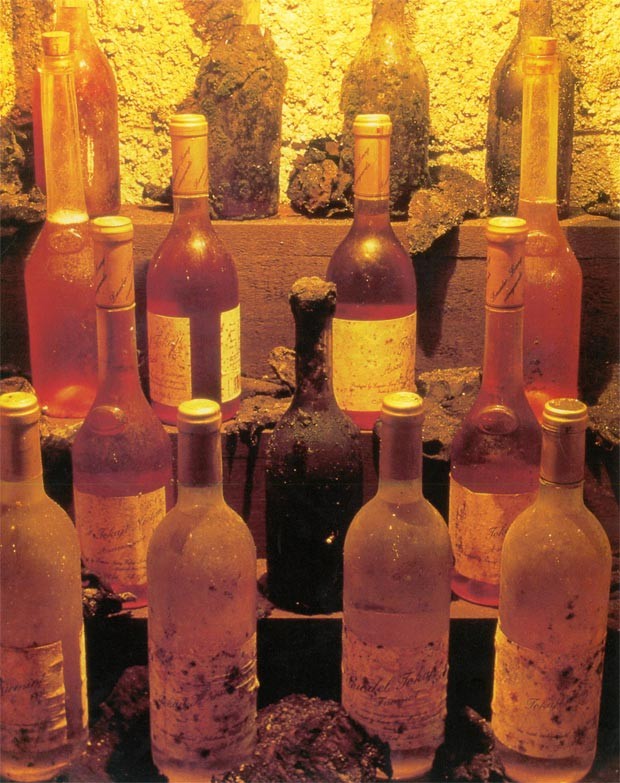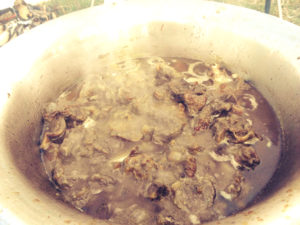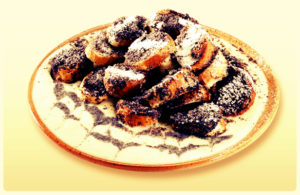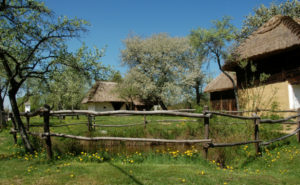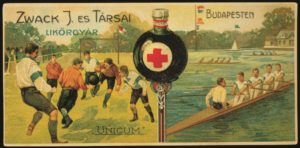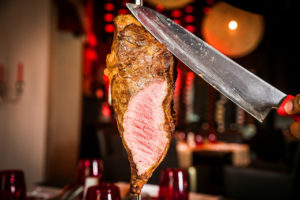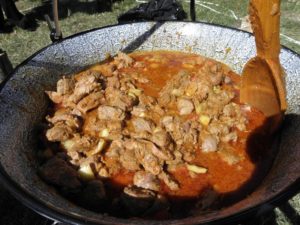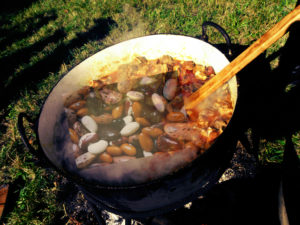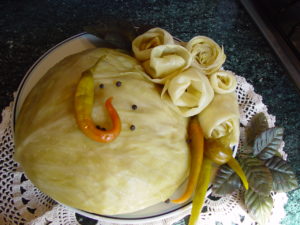Drops of pure gold – Tokay
In the Hungarian National Anthem, the poet Ferenc Kölcsey (1790-1838) enumerated the most precious gifts with which God had blessed the country. Included is the wine of Tokay: “Nectar flowed, drops of pure gold, from the winepresses of Tokaj.” Few of the world’s wines have such a distinction. No doubt has ever been cast on the right of Tokay (Hungarian Tokaji, wine of Tokaj) to be so honored. The name of this famous wine derives from that of the small northern Hungarian town of Tokaj, on the outskirts of the winegrowing region of Tokaj-Hegyalja.
This wine production area, which occupies an area 54 miles (87 kilometers) long by 2-2M miles (3-4 kilometers) wide, is the pride of the Hungarian people. The cultivation of its vineyards and production of its wine has been in the devoted care of countless generations of winegrowers from 26 communities. This wine region and its produce are protected by strict regulations which guard against imitations and against any decline in quality. Precise legal definitions determine which wines have the right to bear the respected name Tokaji, and also lay down the methods of production. Wine connoisseurs the world over know that other wines with similar names (such as “Tokaji”; even some called “Tokay”) are simply misleading non-Hungarian namesakes; they are not to be confused with Tokaji, the true Hungarian Tokay.
It is true that vines propagated from those of Tokaj-Hegyalja have been planted in other European winegrowing areas, and in California. However, the wines they yield in those other regions do not bear comparison with the original. Wines from Tokaj-Hegyalja have to be labeled with an official identification mark before they can be sold. Tokaji aszú (Tokay made from selected, overripe grapes) is sold in clear, squat 50 centiliter bottles with a long neck, which show off the golden color of the wine. Their use dates back to 1862. The other wines of the region are sold in the usual 70 centiliter bottles. The label carries information about the grape variety, the vintage, and the producer. On bottles of Tokaji aszú, the number of puttonyos (traditional wooden tubs) is also given.
The mystery of the gold
The search for the secret of Tokay continued for hundreds of years. Galeotto Marzio, chronicler to the Hungarian king Matthias Corvinus (1458-90), reported respected scholars who claimed that the men of Tokaj obtained gold from deep in the volcanic soil; even that the vines themselves sometimes bore golden fruit. In 1524, the Swiss doctor and natural philosopher Paracelsus traveled to Tokaj-Hegyalja himself. He spent some time conducting experiments on the grapes and the wine they produced, but found no gold. He eventually wrote: “In the grapes of Hegyalja, the vegetable and mineral substances are mingled. The light of the sun shines like a golden thread through the vine and its roots into the rock …” This rather vague conclusion served to nurture even more rumors that Tokay contained gold.
A newspaper report in 1799 announced the discovery of a golden grape at Mád. The Empress Maria Theresia had the fruit sent to Vienna for examination by chemists. They eventually established that the streaks of gold glistening in the grapes was hardened grape juice, baked to resin in the heat of the sun. We now know that the incomparable quality of Tokay is the result of complex interactions; various factors, including the nature of the soil, the climate, grape varieties, winemaking methods, and cellar storage all play a part. The vineyards of Tokaj-Hegyalja are sheltered from the north wind. They lie on volcanic soil with layers of sand and loess. The climate is characterized by hot, dry summers followed by a long, warm, misty fall. These provide ideal conditions for the mold known as the “noble rot.” To make full use of the long fall, late varieties of grape are grown: Furmint, the lime-scented Hársevelű, Muscat lunell, and Orémus.
Tokay at a glance
Only white wines are made in Tokaj-Hegyalja. Over 90% of the grapes grown are Furmint and Hársevelű. Muscat lunell and a local variety called Oremus are used to boost the flavor and aroma. The wines (apart from a few exceptions mentioned below) are produced from several grape varieties.
Tokaji aszú
One of the finest liqueur wines in the world, with a high alcoholic strength; often served as an aperitif, or as a dessert wine. The best temperature for drinking is 57-61 °F/14—16 °C.
Tokaji aszú eszencia
The “king of kings,” the rarest type of Tokay. This is a Tokaji aszú enriched with the juice squeezed from grapes with noble rot simply by the pressure of the berries in the wooden tub. One tub of desiccated grapes yields from 1-4% pints/0.5-2 liters of “essence,” depending on the vintage. One liter of essence contains at least 250 grams of fruit sugar and 50 grams of non-sugar extract (4 oz fruit sugar and % oz non-sugar extract per pint). It achieves a maximum alcoholic strength of 6-10%/vol. The wine matures for a minimum of 15 years in wooden casks, to develop flavor, bouquet, and aromas. It never ferments completely on account of the high sugar content.
Tokaji szamorodni
The name Szamorodni comes from the Polish samo rodni, meaning “as it grows.” It indicates that both plump and shriveled grapes are processed, instead of selecting the berries affected by “noble rot” from the bunches harvested. There are two categories:
Tokaji szamorodni, száraz (dry)
An amber-colored, fiery wine with body and high alcoholic strength. Long years of maturation are the key to its fine qualities. The best temperature for drinking is 50—54 °F/10—12 °C. Tokaji szamorodni, édes (sweet): The natural sweetness of this wine is lent an understated elegance by certain acids. Its bouquet is best appreciated at 54-57 °F/12-14 °C.
The following wines are produced from a single grape variety:
Tokaji furmint, száraz (dry)
Rich in acidity, clean, crisp, and balanced, with a classy aroma. It is usually matured in wooden casks for two years, where it develops a slight storage bouquet.
Tokaji furmint, félédes (semi sweet)
Matured for a minimum of two years.
Tokaji hárslevelű
A fiery, dry wine with a soft flavor and aroma. It spends two years maturing in oak casks before being bottled. Tokaji muscat lunell: An elegant, semisweet wine with a delicate muscat nose. Matured for two years in oak.
Tokaj-Hegyalj a has yet more excellent wines to offer. Usually bottled within a year, they are fresh and fruity and are becoming increasingly popular in Hungary.



